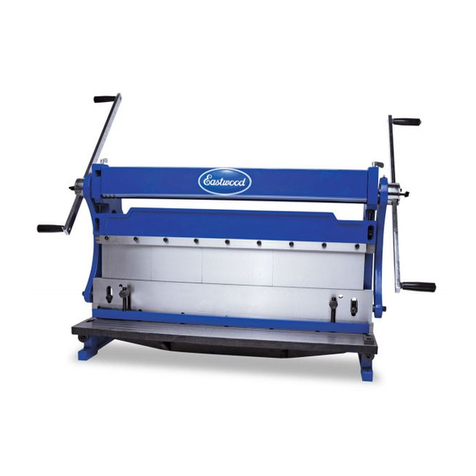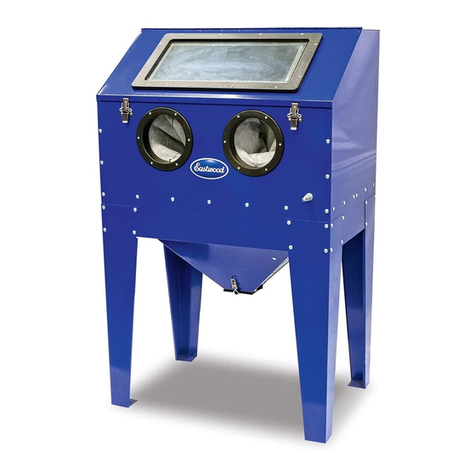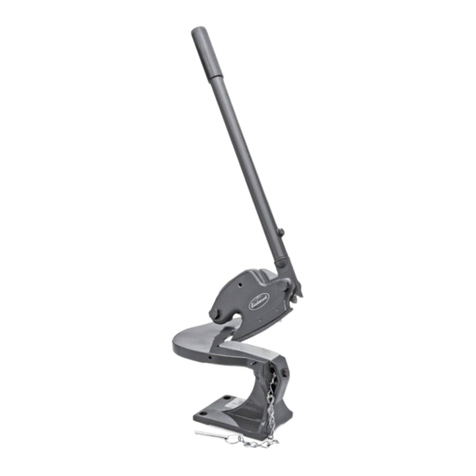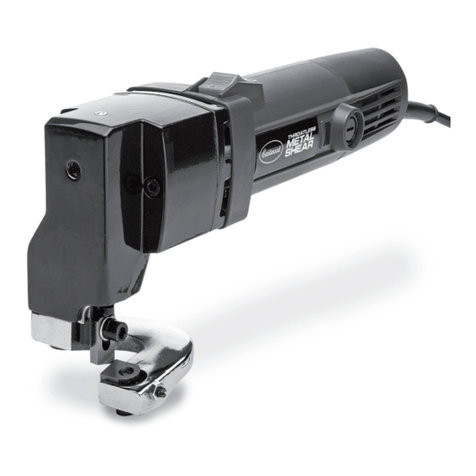
6Eastwood Technical Assistance: 800.544.5118 >> techelp@eastwood.com
BEFORE BEGINNING
Before beginning any blasting, the separate Soda Blasting and Abrasive Blasting systems must be individually adjusted for optimal flow. Failure to do so will
result in inefficient operation and wasted media. This manual is divided into two sections, Blasting With Soda and Blasting with Abrasive Media. Please follow
the individual following procedures for Soda Blasting (GREEN SIDE) and Abrasive Blasting (RED SIDE).
SODA BLASTING (GREEN VALVES)
Although the Bicarbonate of Soda (Baking Soda) blasting media itself is safe in most situations, appropriate care should be taken when using or disposing as some removed
paints and coatings may contain some levels of hazardous materials such as lead, zinc chromate, etc. Additional protection may be required in the presence of these substances.
Soda Blasting Media is highly susceptible to moisture absorption which will cause clumping and erratic operation. To insure proper function, it is imperative to have an effective
moisture filter and or desiccant system in the air supply immediately before the Air Inlet. Be sure to drain any moisture captured in the moisture filter before and after each use.
Failure to do so may cause “caking” of media and complete blockage of equipment.
SODA OPERATION
1. Carefully fill the unit per Blaster Instructions using a screen sifter and funnel.
NOTE: a suitable screen sifter such as Eastwood #50417 Sifter/Funnel must be used to capture any clumps present in the bag of media.
2. Close all four valves and connect the air supply. DO NOT EXCEED 125 PSI. For best
results, begin with a blaster inlet pressure of 80 to 90 PSI. To avoid media clumping or
caking, be certain to have a clean, moisture free air supply that includes an effective
moisture filter or desiccant system.
3. Open the Inlet Air Supply Valve slowly and carefully while checking for leakage.
4. Slowly open the Throttling Valve (FIG. 1) to the 1⁄2 position while checking for leakage.
NOTE: This valve will require fine tuning to provide optimal media flow based on media
formulation, air pressure and desired volume.
5. Slowly open the Media Flow Valve (FIG. 2) to the full position while checking for leakage.
6. You may now direct the nozzle toward your work and depress the Nozzle Discharge Lever.
NOTE: Some slow, pulsing discharges of media can be expected until the flow begins.
7. Once a steady flow of media is observed, begin by holding the nozzle 6” to 12” from the
work surface at a 30°-45° angle for best results.
8. Hold the stream against the work until it abrades through the coating revealing an edge.
9. Use the stream as a “wedge” working at the edge to quickly remove the coating.
10. At this point you can vary the position of the Throttling Valve (FIG. 1) from the initial 1⁄2
open starting setting to achieve an optimum air/media ratio. NOTE: As there are many
variables affecting the flow such as media formulation, hardness of coating, air volume,
air pressure and atmospheric conditions, this process requires
a bit of “trial and error” by experimenting with distance, angle and throttle position. You
will quickly become proficient at determining the ideal settings.
11. When refilling the tank becomes necessary, first shut off the Inlet Air Supply Valve, The
Throttling Valve and The Flow Valve. For safety, disconnect the air supply. Next, open the
Purge Valve to release all tank pressure. You may then open the Tank Filler Cap and refill
following the procedure in step 1.
12. All unused media MUST be drained from the tank when completing work as any moisture
present in the tank will drain to the bottom of the tank and can create a solid “cake” with
the media, requiring complete disassembly of the apparatus at the bottom of the tank.
NOTE: Failure to properly seal or over tightening fittings can lead to component failure
which could result in sudden air pressure release and cause serious injury.
13. To drain unused media from the tank, place the open end of The Clear Purge Hose into a suitable container such as a large bucket or sturdy box with closed seams and
cover with a blanket. Using extreme care, slowly open the Purge Valve and direct the stream of media into the container.
Throttle Valve
(shown in
halfway
position)
FIG 1
FIG 2
Media Flow Valve
Purge Valve



















































